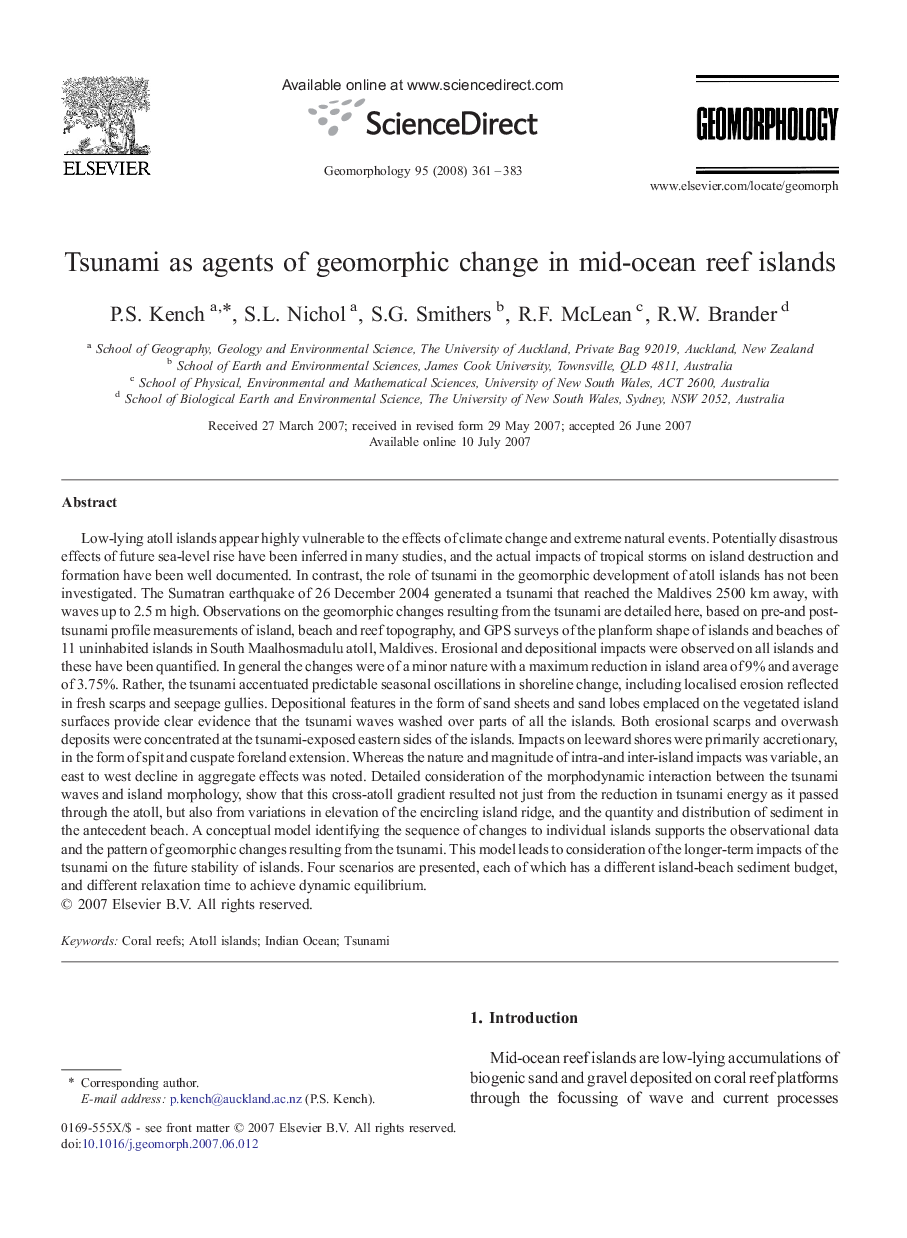| کد مقاله | کد نشریه | سال انتشار | مقاله انگلیسی | نسخه تمام متن |
|---|---|---|---|---|
| 4686872 | 1635562 | 2008 | 23 صفحه PDF | دانلود رایگان |

Low-lying atoll islands appear highly vulnerable to the effects of climate change and extreme natural events. Potentially disastrous effects of future sea-level rise have been inferred in many studies, and the actual impacts of tropical storms on island destruction and formation have been well documented. In contrast, the role of tsunami in the geomorphic development of atoll islands has not been investigated. The Sumatran earthquake of 26 December 2004 generated a tsunami that reached the Maldives 2500 km away, with waves up to 2.5 m high. Observations on the geomorphic changes resulting from the tsunami are detailed here, based on pre-and post-tsunami profile measurements of island, beach and reef topography, and GPS surveys of the planform shape of islands and beaches of 11 uninhabited islands in South Maalhosmadulu atoll, Maldives. Erosional and depositional impacts were observed on all islands and these have been quantified. In general the changes were of a minor nature with a maximum reduction in island area of 9% and average of 3.75%. Rather, the tsunami accentuated predictable seasonal oscillations in shoreline change, including localised erosion reflected in fresh scarps and seepage gullies. Depositional features in the form of sand sheets and sand lobes emplaced on the vegetated island surfaces provide clear evidence that the tsunami waves washed over parts of all the islands. Both erosional scarps and overwash deposits were concentrated at the tsunami-exposed eastern sides of the islands. Impacts on leeward shores were primarily accretionary, in the form of spit and cuspate foreland extension. Whereas the nature and magnitude of intra-and inter-island impacts was variable, an east to west decline in aggregate effects was noted. Detailed consideration of the morphodynamic interaction between the tsunami waves and island morphology, show that this cross-atoll gradient resulted not just from the reduction in tsunami energy as it passed through the atoll, but also from variations in elevation of the encircling island ridge, and the quantity and distribution of sediment in the antecedent beach. A conceptual model identifying the sequence of changes to individual islands supports the observational data and the pattern of geomorphic changes resulting from the tsunami. This model leads to consideration of the longer-term impacts of the tsunami on the future stability of islands. Four scenarios are presented, each of which has a different island-beach sediment budget, and different relaxation time to achieve dynamic equilibrium.
Journal: Geomorphology - Volume 95, Issues 3–4, 15 March 2008, Pages 361–383